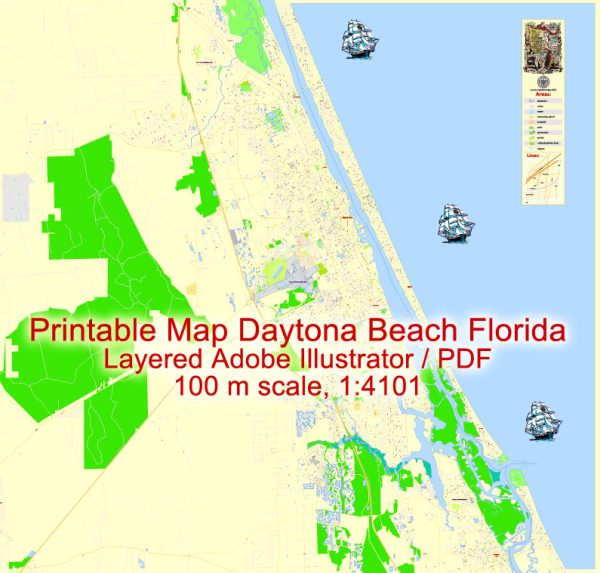Daytona Beach, located on the east coast of Florida, has a rich history of urban development that spans over a century. Here is an overview of key historical points in the city’s growth and evolution:
- Early Settlement and Incorporation (19th Century):
- Daytona Beach was originally inhabited by the Timucuan Indians before European settlers arrived.
- In the 1870s, Mathias Day purchased land in the area and built a hotel, which led to the establishment of the community.
- The city was officially incorporated as Daytona in 1876.
- The Birth of Racing (Early 20th Century):
- The hard-packed sand of Daytona Beach became famous for automobile and motorcycle racing in the early 20th century.
- Land-speed records were set on the beach, attracting racing enthusiasts and contributing to the city’s identity.
- Florida Land Boom (1920s):
- Like many other Florida cities, Daytona experienced a real estate boom in the 1920s. This period of rapid growth saw the development of new neighborhoods and the expansion of infrastructure.
- Great Depression and World War II (1930s-1940s):
- The Great Depression brought economic challenges to Daytona, but the city played a role in the war effort during World War II.
- The military presence increased with the establishment of the Daytona Beach Army Airfield (now Daytona Beach International Airport).
- Post-War Growth and Tourism (1950s-1960s):
- After World War II, Daytona Beach experienced a boom in tourism and population growth.
- The opening of the Daytona International Speedway in 1959 solidified the city’s reputation as a major hub for motorsports.
- Urban Renewal (1970s):
- The 1970s saw efforts at urban renewal, with the redevelopment of areas like the Boardwalk and the construction of new facilities to attract tourists.
- Economic Diversification (Late 20th Century):
- Daytona Beach worked to diversify its economy beyond tourism, with an emphasis on education and healthcare. Embry-Riddle Aeronautical University, for example, became a prominent institution in the area.
- Recent Developments (21st Century):
- The city has continued to evolve in the 21st century with ongoing redevelopment projects, including efforts to enhance the downtown area and waterfront.
- Hurricane Impact:
- Daytona Beach, like many coastal Florida cities, has faced challenges from hurricanes. The city has undergone rebuilding efforts after significant storms, emphasizing resilient urban planning.
- Cultural and Educational Development:
- Daytona Beach has seen cultural and educational growth, with institutions like the Museum of Arts and Sciences contributing to the city’s cultural landscape.
- Ongoing Urban Planning:
- In recent years, there has been a focus on sustainable urban development and revitalization projects, aiming to enhance the quality of life for residents and visitors alike.
Daytona Beach’s history is closely tied to its reputation as a tourist destination and a center for motorsports, but its ongoing efforts in urban development and economic diversification showcase a city that continues to adapt and grow.


 Author: Kirill Shrayber, Ph.D.
Author: Kirill Shrayber, Ph.D.